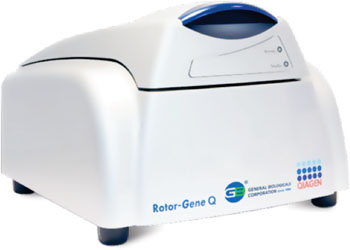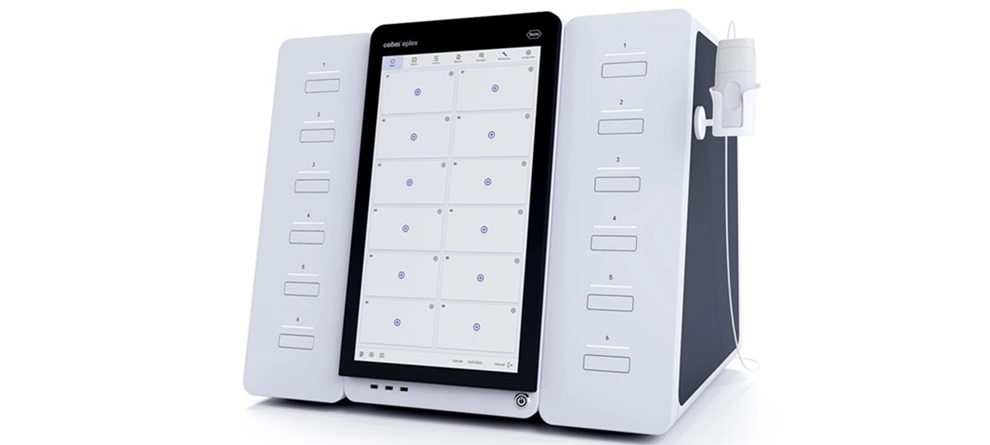Multiplex Molecular Assay Identifies Major Vaginal Lactobacilli
By LabMedica International staff writers
Posted on 26 Mar 2014
Lactobacilli play a key role in promoting vaginal health and depletion of these bacteria is associated with bacterial vaginosis (BV), the most common vaginal disorder.Posted on 26 Mar 2014
A novel single-tube multiplex quantitative polymerase chain reaction (qPCR) assay for the identification and quantitative assessment of the four major vaginal Lactobacillus species has been developed.

Image: The Qiagen Rotor-Gene Q real-time polymerase chain reaction (PCR) analyzer (Photo courtesy of General Biologicals Corporation).
Microbiologists at the Femeris Women's Health Research Center (Hamilton, NJ, USA) assessed 60 vaginal swab specimens as part of a study on BV pathogenesis. Samples were shipped frozen in Universal Transport Medium (UTM-RT) (Copan Italia SpA; Brescia, Italy) from August to October of 2012.
DNA from clinical samples was extracted using the QIAamp Mini Kit (Qiagen; Valencia, CA, USA) in combination with pretreatment with proteinase K and mechanical homogenization. Multiplex and uniplex TaqMan qPCRs were performed using primers and probes from Integrated DNA Technologies (Coralville, IA, USA) and Qiagen’s RotorGene Q instruments were used for all qPCR assays.
The assay utility was evaluated by the analysis of lactobacilli in noncultured clinical vaginal swab specimens collected from BV patients and healthy individuals. As confirmed by the assay, L. crispatus, L. jensenii, and to a lesser extent L. gasseri, are common in the vagina of healthy women, whereas L. iners dominance is associated with BV. In order to confirm multiplex TaqMan qPCR results, bacterial cultures were isolated from vaginal samples and 11 swab specimens yielded isolates of Lactobacillus species identified in them by the multiplex TaqMan qPCR assay. A total of 11 individual Lactobacillus strains were obtained: three L. crispatus, two L. gasseri, two L. jensenii, and four L. iners. Their species assignments were confirmed by both multiplex TaqMan qPCR and uniplex SYBR Green qPCRs with 100% concordance.
The authors concludes that their assay had been validated using bacterial cultures of lactobacilli and other microbial commensal and pathogenic species populating the microflora of the lower female genital tract, human chromosomal DNA, synthetic plasmid controls, and clinical vaginal swab specimens. The multiplex qPCR assay is an advance in the detection and quantitation of the major vaginal lactobacilli, potentially facilitating the molecular diagnosis of BV and post-therapy restoration of the vaginal microflora. The study was published online on January 18, 2014, in the journal Diagnostic Microbiology and Infectious Disease.
Related Links:
Femeris Women's Health Research Center
Copan Italia
Qiagen













